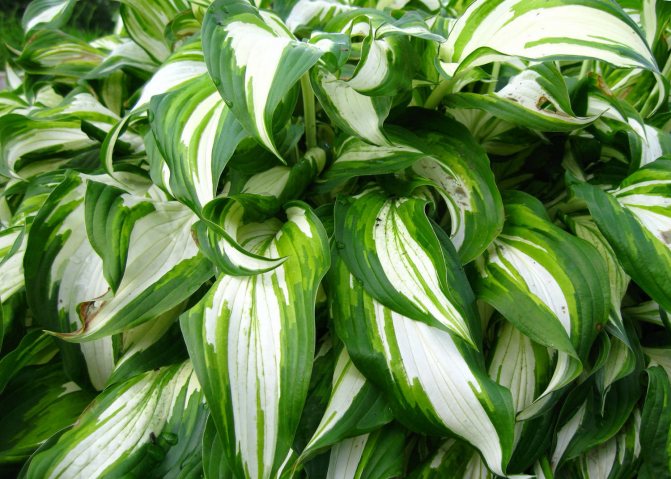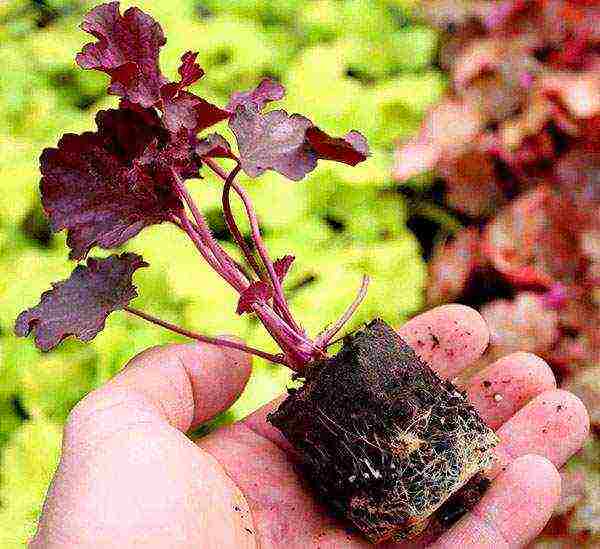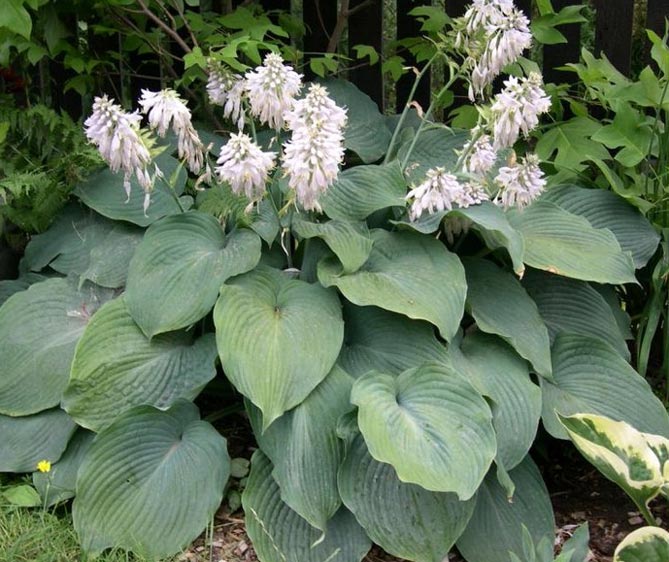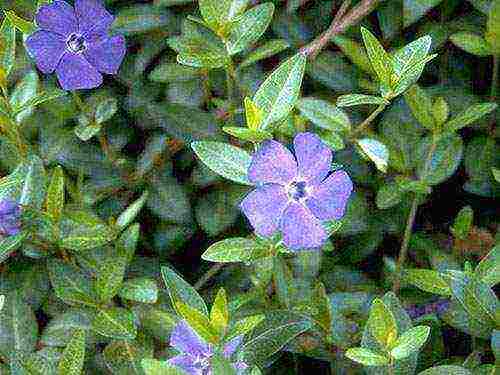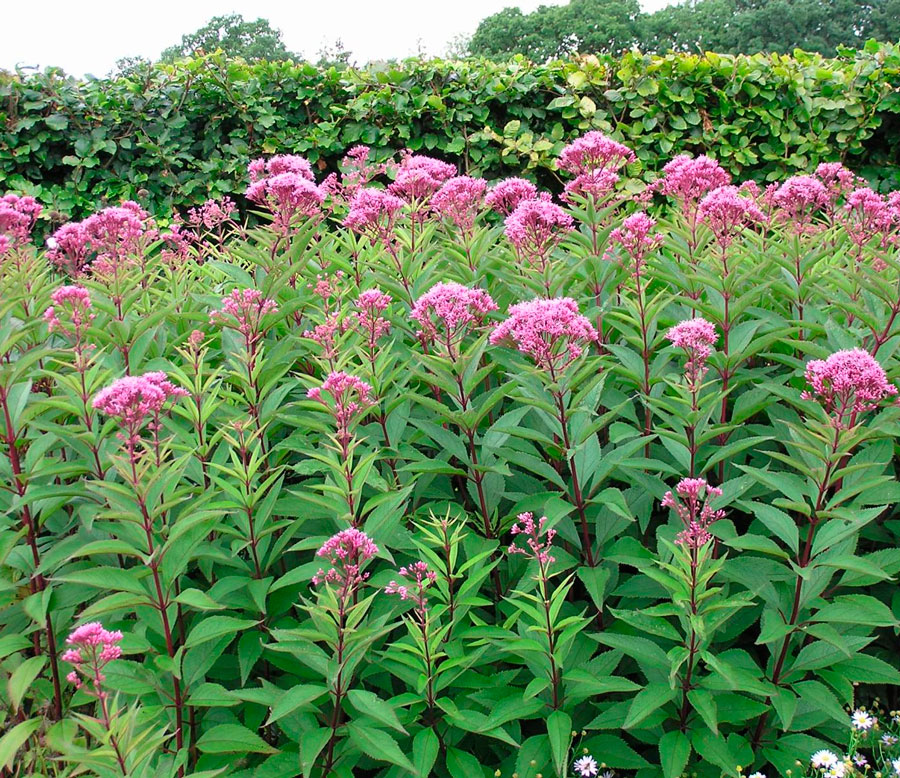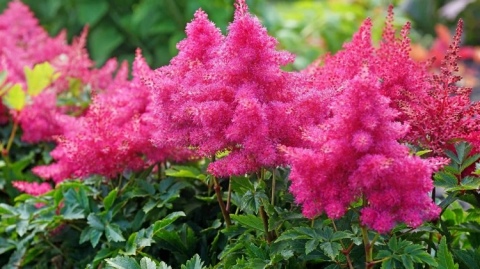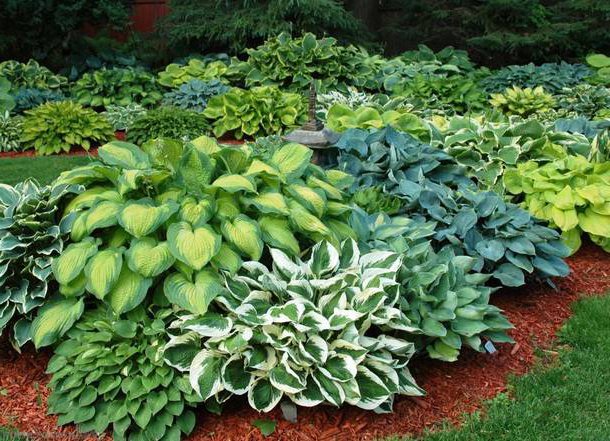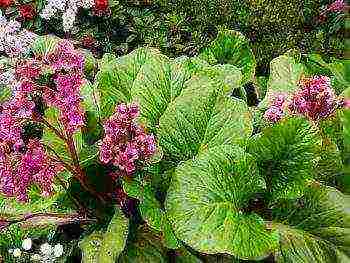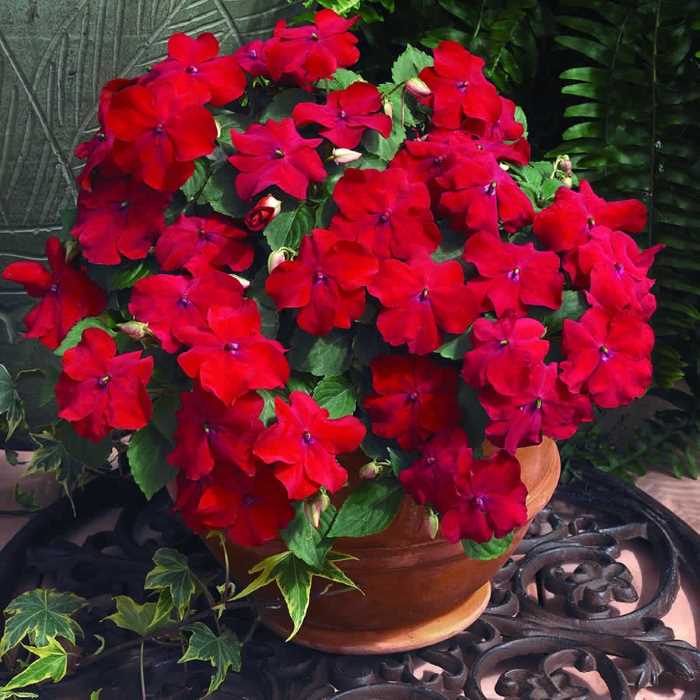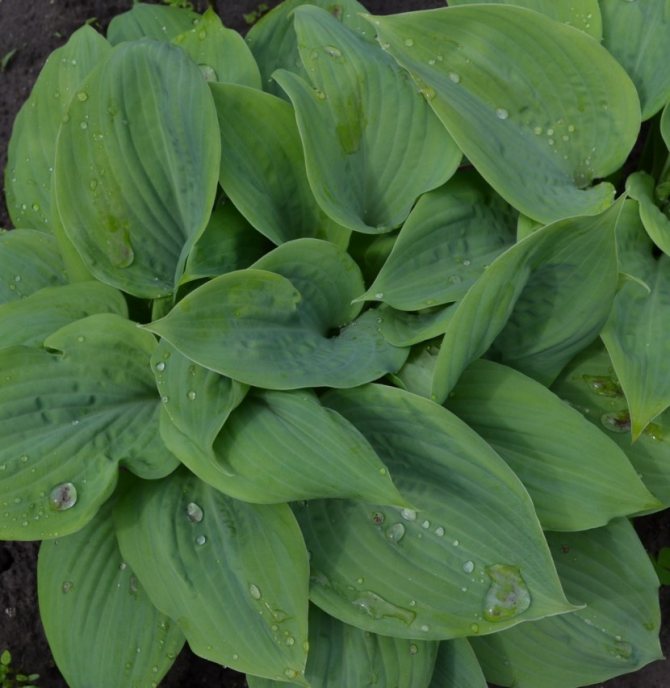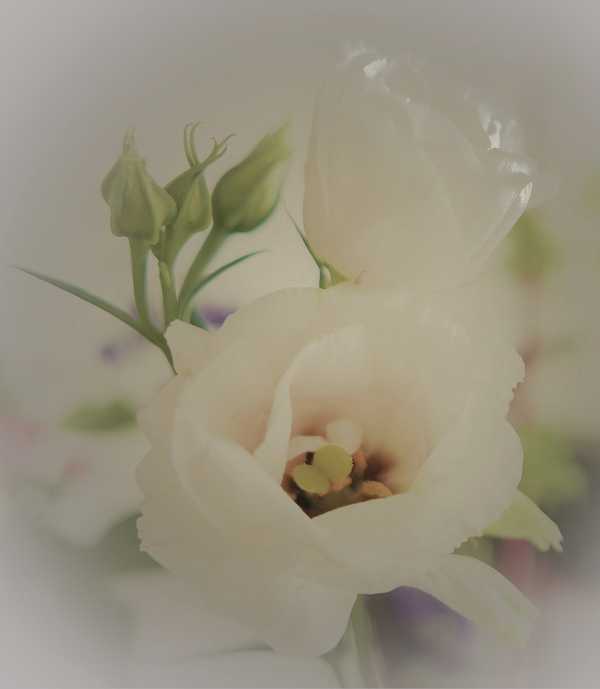Planting astilba in open ground
When to plant astilba in the ground
The astilba plant propagates by seeds and vegetatively - by separating part of the rhizome with a bud or dividing the bush. Planting material in the form of rhizomes with green shoots can be purchased in garden pavilions, and it is better to do this immediately before planting astilba in open ground. And this crop is usually planted in May or early June.
Before buying, inspect the rhizome: it should not have dead and rotted areas, and young shoots should not be wrinkled or too elongated.
How to plant astilba
Bright sunlight is destructive for astilba, so you need to look for a place for it in partial shade and preferably on the north side of the building. Does not like the plant and areas with high-lying groundwater, which can lead to damping and soaking of astilbe roots. In such areas, you will need to arrange reliable drainage or raise the flower bed. Soil for astilba should be sour - pH 5.5-6.6. Of the neighbors for astilba, hosts are preferred, the leaves of which retain the moisture of the soil and do not allow the exposed rhizomes of astilbe to overheat in a sultry season.
Planting astilba in the ground is preceded by digging up the soil on the site with the introduction of rotted peat or rotted manure at the rate of 2 buckets per 1 m², with the simultaneous removal of weed rhizomes. The dug up flower bed is left for 2-3 weeks. Then they dig holes on it at a distance of 30 cm from each other for low-growing varieties and 50 cm for tall ones. The pits should be of such depth that the seedlings rhizomes are placed in them freely. When planting, in no case should the growth point be deepened. At the bottom of the pit, bone meal, mineral fertilizers and wood ash are poured over a matchbox, everything is mixed with the soil, and in order to maintain soil moisture as long as possible, a hydrogel is added to the pit. The plant is placed in a hole, its roots are straightened, after which the space is filled with soil, tamping it slightly so that it fits snugly to the roots. After planting, an irrigation trench is made around each plant, water is poured into it, and when the water is absorbed, the surface is mulched with a layer of peat chips, sawdust, compost or crushed bark 3-5 cm thick, trying to leave some free soil around the green sprouts.
Varieties and varieties of a flower
Thanks to extensive selection work, varieties of various hybrid groups of astilbe with inflorescences of different colors from white and yellow to red, bright lilac and even blue have become available. Regardless of the variety in care, astilba is considered a fairly unpretentious plant.
The most popular varieties:
- David. A spreading bush 1.5 m high, decorated with wrinkled leaves with brown veins, delicate lilac flowers. Blooms in August.
- Chinese astilbe. An early variety that blooms in early summer with lilac, pink, white small flowers, collected in inflorescences. Plant height reaches 1 meter. Basal leaves are large with fluffy red hairs. There are undersized varieties that grow well in sunny places. The most beautiful varieties are considered to be Astilbe chinensis taquetii “Purpurlanze” lilac, pink Astilbe chinensis “Vision in Pink”, Astilbe chinensis (Pumila Hybrida) “Vision in Red” dark purple.
- Japanese astilbe. White, pink inflorescences that appear earlier than other varieties, bright green leaves adorn any garden until late autumn, while maintaining an extraordinary decorative effect when dry. Bushes are low. Most of the varieties were obtained thanks to the works of G. Arends.New varieties are characterized by resistance to cold weather, high survival rate after planting in different climatic conditions. This is Deutschland (Astilbe japonica Deutschland) with white flowers, a very beautiful pink Rhineland (Astilbe japonica Rheinland), pale lilac elegant Europe (Astilbe japonica Europe) and, finally, Astilbe japonica Montgomery with panicles of bright red, burgundy color ...
- Naked astilba. Miniature variety only 12 cm tall with bronze leaves.
- Thunberg. Snow-white beauty, 80 cm high, with complex jagged leaves. The length of the inflorescences reaches 25 cm. The width is 10 cm.
- Common astilbe. Small plants can develop, bloom beautifully only in partial shade. This must be taken into account when choosing a place for its landing. Delicate inflorescences give it a special airy look. The most original varieties of this species are Praecox Alba with white loose inflorescences, pinkish Bronze Elegans candles, which got its name for the bronze shade of the leaves, coral Straussenfeder 90 cm high, white Professor van der Wielen from Thunberg hybrids.
Planting and caring for astilba in the open field
The development, growth of a plant, abundant long flowering depends on many important factors: location, planting material, planting dates and full subsequent care.
Competent agricultural technology consists of the following activities:
- watering and timely fertilization;
- regular pruning;
- preventive spraying and inspection of the crop for pests and diseases;
- preparation for the winter period.
It is also necessary to periodically loosen the soil and mulch.
On this topic:
BACK
FORWARD
1 of 166
Landing rules
Planting astilba in open ground and the subsequent care of the crop must begin with the preparation of planting material, soil and the choice of a growing place.
The correct development of culture largely depends on the chosen place.
Astilba loves shade, but warmth is also important to her. Therefore, experienced gardeners recommend choosing partial shade.
Do not plant crops in open areas with direct sunlight. The inflorescences will gradually become small, and the flowering will not be so long and plentiful. At the same time, it is noted that the shade of the panicle is much paler. There are varieties that prefer sunlight, but these are few.
As for the soil, any fertile soil is suitable for this perennial, it is good if groundwater is located nearby. You should not plant a bush next to those trees, the root system of which is close to the surface. In this case, crops will constantly struggle for moisture, and the superiority will be on the side of the tree. It will ruin Astilba.
Before planting, the soil must be dug up, peat or humus must be added, as well as a complex mineral fertilizer. Dig a hole 30 cm deep. In this case, you should plan the site in advance if there are several bushes. The distance between undersized and dwarf varieties should be at least 30 cm, between large and medium - from 50 cm.
After planting astilba in open ground, you need to water the seedling abundantly and form a layer of mulch from 3 cm on top.This will protect the still undeveloped root system from drying out.
Crop care after planting
In the spring, after the snow melts, the bush rises slightly above the soil level. Therefore, first of all, the root zone must be sprinkled with soil enriched with minerals to the point of growth. Further, to prevent the roots from drying out, the soil should be mulched.
Astilba loves moisture, but it is necessary to water the soil abundantly not only for this reason. The root system of the plant is arranged in such a way that its lower processes gradually die off, while the upper ones, on the contrary, actively grow. It is at these moments that the culture especially needs full watering.
Twice a day, astilba is watered during the formation of inflorescences, but it is important to ensure that the water is warm or at room temperature
Abundant and long-term flowering requires a lot of energy, so perennials require timely feeding. Astilba has a positive effect on all types of fertilizers, but most experts believe that it is better to feed the plant with a compost-peat mixture and rotted manure.Gardeners noticed that if you organize the feeding regime correctly, then the culture will not need a transplant for 10-15 years.
For better access of oxygen to the roots, it is necessary to periodically loosen the soil near the root zone, and at the same time remove weeds. It is also necessary to protect the root system of the plant from frost. In the fall, before the onset of cold weather, astilba needs to be covered with spruce branches or special covering material. The perennial is quite resistant to frost, however, spring frosts pose a danger to it, when the snow has already melted.
Particular attention should be paid to pruning the plant. It must be carried out in a timely manner and fulfill a specific purpose.
In different periods, astilbe will require rejuvenating, shaping, sanitary and thinning pruning.
The main purposes of pruning include:
- regulation of the process of growth and development;
- formation of the desired shape;
- lush and long flowering;
- prevention and treatment of diseases;
- removal of old, dry, weak processes.
Caring for astilba in winter (with video)
Almost all varieties of the astilbe plant are frost-resistant, so the plant remains overwintering in the open field, and in order to protect it from spring temperature drops, gardeners recommend covering it with natural materials. Before the onset of cold weather, the stems are cut to the very soil, and the roots remaining in the ground are mulched.
Proper winter forcing allows flower growers to admire the exuberant flowering of their favorite plants much earlier. To do this, you need to follow these simple steps:
- in the fall, transplant a young bush into a flower pot;
- store it in a cold room and keep it there until January;
- in the period from January to February, it is necessary to keep the plant indoors at a temperature of +10 - +12 degrees;
- starting in February, it is necessary to extend the daylight hours, increase the temperature and ensure abundant watering;
- with the arrival of spring, the plant is returned to its permanent place in the garden.
You can learn more about caring for astilba in winter by watching this video:
Preparing Astilba for winter

It is necessary to prepare a newly planted astilba bush for wintering in advance - in the summer. In plants of the first year of life in a new place, the peduncle is removed as soon as it is isolated. Throughout the season, soil is weeded around the bush and weeds are removed. When loosening the crust on the soil surface, you need to do it carefully, trying to keep the young roots intact.
After the first autumn frost, the blackened leaves are cut off at ground level and placed on the growing bushes. Then, an earthen mound about 4 cm high is created above the bush, and then fill the place of growth of astilba with dry leaves or peat. Crushed bark or humus is also suitable.
On the bushes of the second and subsequent years of life, flower stalks are left, and for the winter they are insulated with peat or fallen leaves in the same way. Every year, the rhizomes of astilba rise higher and higher and soon begin to bulge out of the ground, becoming defenseless against the winter cold. Astilbe, frozen in winter, become less decorative.
Four-five-year-old astilbe plants are fully covered before the onset of frost. To begin with, cut off the foliage and flower stalks. At the next stage, a frame is built into which insulation can be laid - dry leaves or tops. You can fix the leaves in the frame with nonwoven spunbond or lutrasil. You need to protect the planting from getting wet with plastic wrap pressed along the edges.
A strong, healthy plant will more easily endure winter colds and return frosts.
It is possible to increase the immunity of astilba with the autumn application of potash and phosphorus fertilizers. Under each bush, 50 g of a mixture of fertilizers are scattered in a 1: 1 ratio. Good results are obtained by using well-rotted organic matter - manure or compost. Slowly decaying organic matter warms the bush in winter and provides food in an accessible form in summer.
Reproduction at home
It will not be difficult to breed this plant on your own. Reproduction takes place both by seeds and vegetatively. With the help of seed propagation, it is possible to develop a new plant variety. The second option is suitable for inexperienced gardeners, since it allows you to divide the bush or reproduce by buds, which will not be additional difficulties.
Astilba propagation by seeds
Seed propagation
It is worth sowing seeds in moist soil, without covering them with earth. In order for the seed to germinate much faster, it needs high humidity. For this, as a rule, special greenhouses are used or the crops are covered with glass. To grow good seedlings, it is necessary to water the crops correctly and in a timely manner. The seeds need to be well protected from direct sunlight, which can dry them out. That is why it is worth looking for a place where future flowers will have good protection from the sun, but while avoiding constant shade.
To increase seed germination, it is necessary to stratify them in advance. This means that the seeds must be placed in a cold place for about 3 weeks before sowing. After hardening, the seeds must be planted in the greenhouse and wait for them to sprout at a temperature of + 20 ° C. As soon as the sprouts appear, it is worth waiting for about 2-3 months, and then planting them in the ground. Those seeds that have been stratified will take root in the future and grow much better than commonly grown plants.
How to propagate by dividing a bush
First, you need to carefully excavate the soil around the flower within a radius of at least 15-20 cm and extract the roots along with the soil.
The excess soil must be gently shaken off.
Using a sharp knife or shovel, carefully divide the root system into several pieces. Do not forget that each part must have at least 4 buds for better survival.
Rhizomes that have dried up must be removed.
Prepared plants are planted in open ground, 30 cm apart from each other.
Be sure to water newly planted flowers in moderation.
The bushes, separated and planted in early March, delight gardeners with beautiful inflorescences by autumn.
How to propagate a flower using the buds
One of the fastest reproduction methods is renal. Such an operation is performed only in the spring, at the time of the emergence of shoots. The first thing to do is to cut off the desired buds with a small part of the root. The cut should definitely be covered with charcoal or wood ash, which will avoid any infection.
The shoots must be planted in a peat-gravel mixture, observing a ratio of 3: 1. Be sure to cover with cling film to create a greenhouse effect. In open ground, it is necessary to plant the strengthened processes. The most favorable time for planting in the garden is autumn or spring.
This type of reproduction has a small drawback, because in order to get a full-fledged flower, you will have to wait a year.
Diseases and pests
Astilba is a plant resistant to pests and various diseases. With improper care, its root system can dry out, which will lead to wilting of the leaves.
Among insect pests, astilbe is most often affected:
- Slobbering stump - leads to yellowing and falling leaves;
- Gallic nematode affects the roots of the plant, it stops blooming, then dies. You can cope with the pest with the help of phytoverm. If the pest does not die from the effects of the poison, then the affected bush will need to be destroyed along with the root system, otherwise the disease will spread to healthy plants. In the place where the infected bush grows, it is not recommended to plant healthy bushes during the first few years.
- Strawberry nematode - affects the leaves of the plant, leads to the formation of brown spots. You can fight it with an insecticide.
- Cicadas draw the sap out of the plant, causing it to become light-colored. It is destroyed with the help of poisons such as aktara, karbofos.
Astilba needs more care for the first two years of life. In the future, it will not require much attention to itself, but will delight with lush flowering and beautiful decorative foliage.
Astilba flower propagation
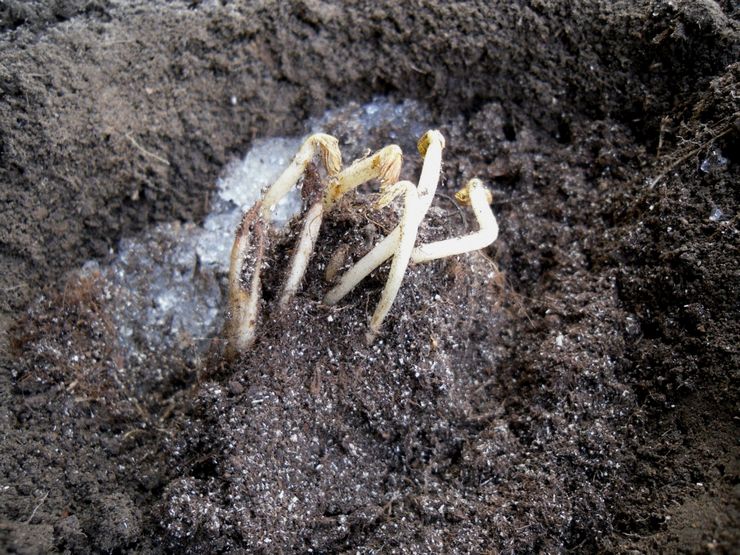
The astilbe flower can be successfully propagated in one of the following ways.
Dividing the bush
The procedure is carried out in the spring when transplanting an adult plant. Each plot should contain two or more buds. As a result of division, we have several full-fledged plants with an independent developed root system. The place of dividing the bush is covered with ash or charcoal for disinfection.
Budding (or grafting)
Reproduction by budding is carried out in the spring. One bud is separated from an adult bush and planted in a greenhouse. After the cutting takes root, it is kept at home until next spring, after which it is planted in open ground.
Sowing seeds
The least preferred method, as the seeds are quite small, difficult to work with, and also have a low germination rate. You can activate the seed germination process in the following way. For this, the seeds are kept for 20 days at an ambient temperature of +4 to -4 degrees. After this period, they are placed in a warm room for 3 days.
For sowing, use a container containing a substrate from a mixture of peat and sand. Seeds are poured onto its surface. It is not necessary to cover with a layer of soil. The greenhouse is daily ventilated and humidified from a spray bottle. Keep in a bright place at high temperatures. To cover the greenhouse, I use glass or transparent plastic wrap.
The first shoots can be observed on days 21-28. As soon as the first pair of leaves is formed, the astilbe dives. Seed propagation is the least preferred method, since the resulting plant specimens can turn out with unexpected color of panicles, low decorative effect of leaves, weak and short flowering.
Outdoor care for astilba

The main thing for observing the rule of caring for astilba is to constantly keep the soil moist. Drying out of the substrate is detrimental to the plant. Periodically, the soil is loosened and fertilizers containing phosphorus and potassium are applied to it. Nitrogen fertilizing is applied only once for the whole season - before flowering.
After each loosening, the soil surface should be covered with a thick layer of mulch.
A young plant with a small root system can be oppressed by weeds, so the bush will need to be weeded regularly. With the growth and development of astilba, the need for this disappears.
Transplant and formation of a bush
Astilba tolerates the process of transplanting it to a new place well. You need to transplant the plant once every 5 years. If this is not done, then the root system will come close to the soil surface and begin to dry, and the plant itself may die. With a new transplant, the bush is deepened by 5 cm.
If astilba was grown from seeds, then early transplantation will only harm it, since the root system of such a plant forms slowly. It is not at all necessary to change the place when transplanting, you can just dig up the plant, add fertilizer into the hole and plant the bush back, deepening it by 5 cm.
The bush does not need additional pruning, since it independently forms the necessary crown. Only occasionally do you need to remove dried leaves and stems, as well as wilted flower stalks.
Diseases and pests
Astilba is very resistant to various diseases and attacks of insect pests, but only with proper care and preventive measures. The culture can be threatened by the slobbering penny, which significantly slows down the development and flowering of the plant.In some cases, the root system of the bush is attacked by the root knot nematode. It gradually eats up the roots, and the plant withers.
Of the diseases, Astilba can suffer from bacterial spotting, which is treated with special preparations containing copper, as well as from viral infections. In case of significant infections with viruses, infected specimens must be destroyed.
Astilba is a very beautiful perennial that attracts gardeners not only with its decorative qualities, but also with simple rules of agricultural technology, unpretentiousness, resistance to diseases, pests and severe frosts. It is known that the crop is able to resist weeds on the site. There are many varieties and varieties of perennials. Each gardener can choose the preferred shade and height of the shrub for their garden.
How astilba reproduces
Astilba can be propagated by seed or vegetative propagation. In the second case, fragments of rhizomes or buds are used. After the plant fades, seeds ripen in capsules, they are sown in early March, but before that they are "hardened" with cold.
To do this, take a suitable container, pour a mixture of peat and sand (equal proportions), scatter seeds on top, lay a 2 cm layer of snow on top of them. By the way, you can use snow from the freezer. The snow will melt naturally, burying the seeds inside the soil. After the snow melts, cover the container with glass or plastic wrap and then refrigerate for 3 weeks. For these purposes, the lower compartment, where vegetables are usually stored, is perfect. During this period, already hardened seedlings will germinate, which will eventually turn into strong plants that are not afraid of cold and frost.
After the sprouts appear, move the container to a lighted place where the air temperature is at least + 20 ° C. Watering the seedlings should be extremely careful, for this it is better to use a syringe to direct the stream of water to the root. After the appearance of the first 3 full-fledged leaves, small seedlings can be planted in individual pots. It should be borne in mind that varietal crops are not propagated by seeds - hybrids do not retain their individual characteristics.
How to grow astilba from rhizomes? Rhizome division is the easiest, most effective way of reproduction. To do this, a full-fledged plant should be dug out, removed from the soil along with the roots, with an earthen lump. Then gently shake off the ground, expose the root system, take a knife, divide the root into fragments, and each piece should have at least 4 buds. After that, you need to plant the roots at a distance of 25-30 cm from each other, water it daily (not too abundantly).
Astilba - growing and care, photo:
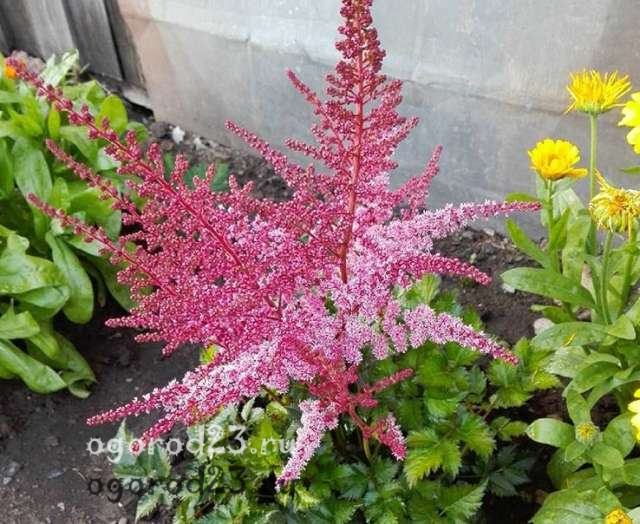
Reproduction by buds gives the fastest results. It is best to select seed in the spring, when the growth of new shoots is activated.
The buds are carefully cut off along with a piece of rhizome. The place of the cut is sprinkled with ash or a crushed mortar tablet of activated carbon
After that, take a container, fill it with a mixture of peat and gravel. For 3 parts of peat take 1 part of gravel. After that, the kidneys are buried there, covered with glass or film. When the plant germinates, gets stronger, it can be planted on the site using the method described above.
How to care for astilba? The main thing is to remember about the unusual features of its root system, make sure that the roots are covered with earth. Provide regular watering (according to the variety). Mulching is desirable. Both overheating and waterlogging are equally harmful to all plants, and the mulch layer will help keep the roots healthy. Remove weeds, water more often during the formation of flowers, apply fertilizing according to the season: in the spring - nitrogen, in the middle of summer - potash, at the end of summer - phosphorus. Astilba should be transplanted every 8-10 years.With a competent approach to business, this plant will transform your summer cottage, give positive emotions, bright colors of summer. Thus, astilba is aesthetic, undemanding. outdoors are not difficult.
What year does astilba bloom after planting? Grown from seed, blooms in the 3rd year. And those that you planted by dividing the rhizome can bloom in the year of planting.
When to transplant astilba in spring or autumn? Can be transplanted in spring and autumn. If you decide transplant the plant in autumnthen wait until the end of flowering. But do not delay the transplant: the plant should be transplanted about a month before the onset of cold weather (not lower than + 5 ° C). In central Russia it is about September, in the Kuban - in October. If you plant or transplant astilba in the spring, you will be able to see flowering already this season. Try to hold this event in April-May if you live in central Russia, and in March-April if you live in the Kuban. Astilba may not be transplanted for many years. But sooner or later, its flowering will become scarce. Fluffy panicles will become rare and will lose their decorative effect. Experts believe that astilba should be transplanted about once every four years. But, if you see that your plant has not lost its fluffiness and splendor, then do not touch it for another year or two.


